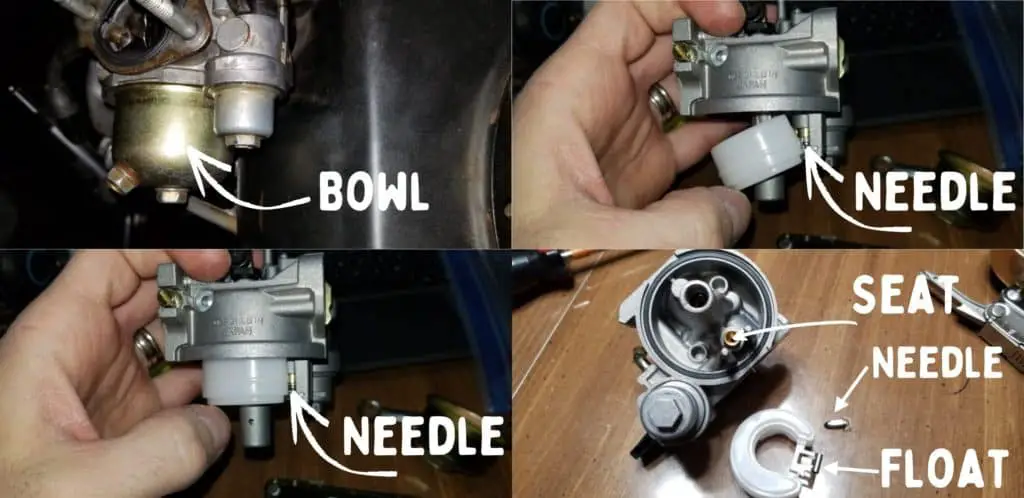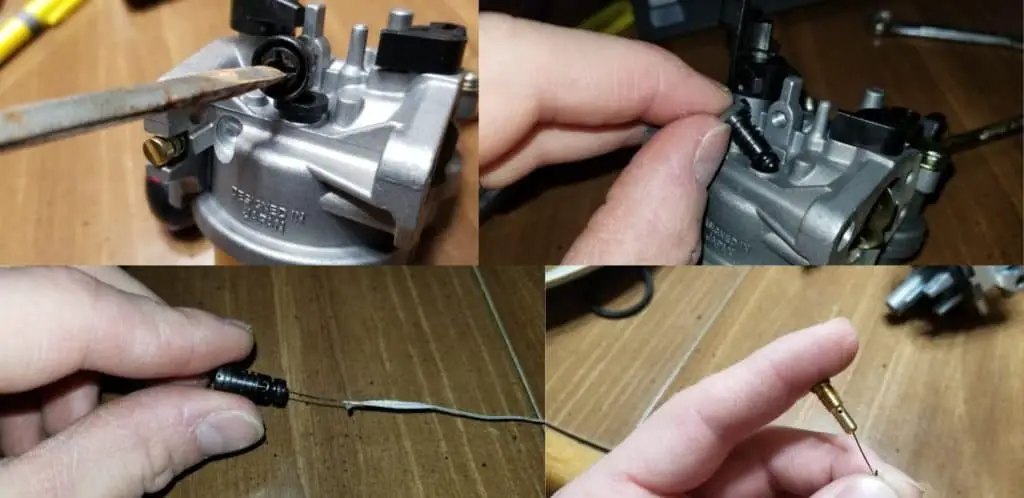When the power comes back on and your generator is ready to go back in storage, it’s common to wonder how long the gasoline in your tank will remain good for.
As a general rule, gasoline can remain in a generator for up to two years if properly treated with a stabilizing agent. If no stabilizing agent is used, regular gasoline should be replaced after 3 months and ethanol-free gasoline should be replaced after 6 months.
Not all gasoline is created equal as far as longevity, and certainly not for how it will effect your generator while in storage.
Let’s check out how long you can expect your gas to last (treated vs. untreated), which gasoline you should use in your generator, whether or not you should allow gas to sit in your generator’s carburetor during storage, and how to clean and dispose of gas in a generator that has gone stale.
How Long Will Gas Last In a Generator
Most generators will run on regular (E10) gasoline, which roughly contains 10% ethanol, or they will also run perfectly well on ethanol-free gasoline which is often referred to as marine gas.
Just because they can both be used does NOT mean that they will store equally well.
Under the best of conditions, regular E10 gasoline will last for about 3 months in your generator’s gas tank, whereas ethanol-free gasoline could last up to 6 months.
Beyond that point, the gas will be oxidizing at a higher and higher rate and losing its efficacy and shelf life.
| Gas Type | Time Before It Starts to Noticeably Degrade | Time to Drain and Replace Fuel | Useful Life When Treated with SeaFoam |
|---|---|---|---|
| Regular E10 | 1 Month | 3 Months | 1-2 Years* |
| Ethanol Free | 2-3 Months | 6 Months | 2 Years* |
When oxygen comes into contact with the gasoline, it allows the “light ends” to evaporate out of the gasoline. These “light ends” are the most combustible part of the gasoline.
As they evaporate out, you are left with the heavier ends which are lest combustible.
Also, gasoline has hundreds of chemical additives before you even pump it at the station, and oxygen in the air will oxidize all of these chemicals that are designed to improve performance.
If left long enough, gasoline will go stale, lose its potency, and turn into a putrid smelling varnish within your tank, fuel lines, and carburetor.
The next time you go to start your generator, it will likely take some small engine repair to get it going.
Is there a way to stop gas from oxidizing?
YES!
Fuel stabilizers are readily available and can be a game changer for your gasoline storage needs.
I prefer to use SeaFoam (Amazon) which when added to your gas at purchase can allow you to store your gasoline for up to 2 years! You simply add 1 ounce per gallon being stored. SeaFoam will also clean out any deposits from old gasoline in your fuel lines and carburetor.
I’ve actually done this test myself and stored ethanol-free gas with SeaFoam in my Honda generator for 2 years, and regular E10 gasoline with SeaFoam in another Honda generator for 2 years.
Both generators ran perfectly well at the end of the two years and I saw no perceivable loss of power.
Which Gasoline Should I Store in My Generator?
Should I use E10 fuel with ethanol, or marine gas that is ethanol-free?
This debate is about as old as time when it comes to the small engine repair community and is likely to get emotional responses from both sides of the aisle.
I’m not sure if it’s the ethanol itself in E10 fuel, or if its the additives that are used, but with all of the engines that I’ve serviced over the last 6 years I’ve found that those that use regular E10 fuel have far more service issues with the carburetor, filters and fuel lines to get them back up and running.
If you were my neighbor, I would say that if you’re using the gasoline right now, then it doesn’t really matter which one you choose. You’re burning it up in the combustion process and it’s not sitting in the tank.
The issue I have is with storage. Even though I’ve successfully stored E10 gasoline that’s been treated with SeaFoam for up to 2 years, I would still recommend using marine gas (ethanol-free) if the option is available to you. However, with 2022 gas prices, I wouldn’t blame you for sticking with E10 and treating it with SeaFoam since ethanol free gas is outrageous in cost. SeaFoam has also risen in cost by 25%, so it’s fun times all around.
I’ve seen too many fuel lines that are cracked, carburetors that are gummed up, and water that is mixed in with E10 fuel when stored improperly or in less than ideal conditions.
If you are looking for the nearest gas station where you can find marine gas, simply enter in your location on this website with an interactive map and you’ll know where to go.
Can I Let Gasoline Sit in the Generator’s Carburetor During Storage?
As a best practice, it is best to drain the carburetor of fuel prior to storage. Leaving gasoline in a carburetor during storage will cause the float needle to press against the seat. If left long enough, the rubber can deform and the carburetor will flood with gasoline. This will flood your engine (or spill out the carburetor) during use and prevent it from running properly.
Let me briefly explain this if it didn’t make sense the first time around.
At the bottom of your generator’s carburetor is the bowl. Inside the bowl is a float. When gasoline enters the carburetor, it raises the float.
As the float raises, it has a needle attached to it. This needle is either rubber tipped and presses into a metal seat, or it is a metal needle that presses into a seat that is essentially a rubber o-ring.

Once the needle is firmly pressed against the seat, it stops the flow of gasoline into the carburetor until fuel is used and the float drops again.
If you leave your carburetor full of gasoline prior to storage, the float needle is constantly pressing against the seat. Over time, these surfaces deform ever so slightly as there’s constant pressure on them.
All it takes is a small deformity and gasoline will be able to leak by the needle and the seat, which will overflow your carburetor bowl. This gas will then rise up through the throat of the carburetor and flow into your engine or out your air filter, depending on the angle.
How to Fix a Generator with Bad Gas
This is never a fun process but it’s not hard to do. (If you need a full picture-by-picture tutorial of how to clean a carburetor on a generator, I have one here). If gas has lost its potency but hasn’t turned to varnish yet, follow these steps (which may very slightly depending on your make and model):
- Turn off the fuel shutoff valve (petcock)
- Disconnect the fuel line from the carburetor and place the fuel line in a jar or proper container to hold fuel
- Turn on the fuel shutoff valve and allow gas to flow out of the tank and into the container until the tank is empty
- Reconnect the fuel line to the carburetor
- Unscrew the bottom bolt (or the drain bolt if your carburetor has one) on the carburetor and empty the bowl of any stale fuel
- Replace the carburetor bolt, tighten, and fill the tank with new gas
Now, if your gas has turned to varnish, you’ll still need to perform the steps above where you drain the tank.
After the gas tank and carburetor are drained, you’ll need to remove the air filter housing assembly and remove the carburetor for cleaning. Remember to take lots of photos as you go of what everything looks like before you start removing things.
You’ll need some carburetor cleaner spray and the wire from a twist tie to clean out all of the small jets in your carburetor.
Key areas to clean:
- Main jet and emulsion tube
- Pilot jet
- Fuel Inlet Tube


While you’re cleaning the carburetor, you can also shut off the fuel petcock under the gas tank and pour in a quart of acetone, swish it around, and let it sit in the tank for an hour. The acetone will dissolve the varnish in the tank. Drain the acetone out the fuel hose that normally connects to the carburetor.
Collect the acetone and feel free to put it in a wide enough dish and put the carburetor in it to allow the acetone to dissolve anything that you missed. Just be sure to remove anything rubber from the carburetor first, like the bowl gasket and the float needle (or seat, depending on which one is rubberized).
Pour the acetone back into its container for future cleanings.
Will Old Gas Ruin a Generator?
Old gas will not ruin a generator in the sense that it will never function again, but it will certainly clog up carburetor jets, fuel lines, and any filters in the system. Until these are properly cleaned or replaced, the generator will either cease to function or will run very poorly.
Replace untreated gas in the tank after 3 months or store the gas for up to two years by using 1 fluid ounce of SeaFoam per gallon of gas that is added to the tank. Personally, I just mix the SeaFoam into the gas tank upon purchase.

Can I Rejuvenate Old Gas in a Generator?
Stale gas cannot be rejuvenated in a generator. It can either be diluted with fresh gas and may or may not still perform (though sub-optimally depending on the ratio), or it can be drained and replaced. Once gasoline goes stale from oxidation, there is no reversal of the process.
What Should I do with Old Gas in a Generator?
If you’re choosing to drain the old gas instead of diluting it with fresh gas for use, then you can often add it to your vehicle’s engine where it will be properly diluted. If the gasoline is so far gone that is smells putrid and is dark amber in color, then it is best to dispose of properly at a designated hazardous waste facility in your area. The cost is generally nominal to dispose of small quantities.
